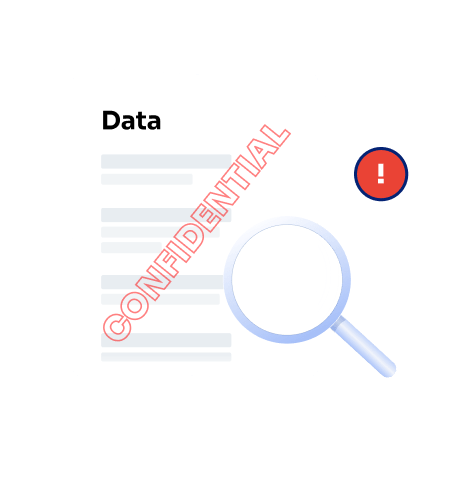Introduction
Sensitive data exposure is a critical issue in today’s digital landscape, where data breaches and security incidents can lead to severe consequences for individuals and organizations alike. As technology advances and more data is collected and shared, the potential for sensitive information to be exposed increases. This article will explore the various aspects of sensitive data exposure, including its definition, causes, consequences, and preventive measures.
What is Sensitive Data?
Sensitive data refers to any information that is confidential, proprietary, or personal in nature and requires protection from unauthorized access, disclosure, or theft. This type of data can include personally identifiable information (PII), financial information, health records, and confidential business information.
Definition and Examples of Sensitive Data
Sensitive data can be defined as any information that, if accessed or disclosed without authorization, could potentially harm individuals, organizations, or both. Examples of sensitive data include:
Personally identifiable information (PII): Social Security numbers, driver’s license numbers, and passport numbers.
Financial information: Credit card numbers, bank account numbers, and financial statements.
Health records: Medical history, test results, and prescription information.
Confidential business information: Trade secrets, proprietary data, and customer lists.
Correctly identifying and categorizing sensitive data is the first step in ensuring its protection. Organizations must be vigilant in recognizing the various forms of sensitive data they handle to implement appropriate security measures.
Understanding Sensitive Data Exposure
Sensitive data exposure refers to the unintentional or unauthorized release of confidential information, including personally identifiable information (PII), financial data, health records, and other sensitive information. Vulnerabilities in data systems can expose sensitive data through inadequate security measures, broken access controls, and malicious software attacks. Organizations must recognize the types of data they handle and the risks associated with their exposure.
Sensitive data includes not only obvious categories like credit card numbers and social security numbers but also less apparent data like biometric data, login credentials, and electronic protected health information (ePHI). Properly managing and protecting this data cannot be overstated, as its exposure can lead to identity theft, financial fraud, and significant legal liabilities.

The Importance of Data Protection
Data protection is a vital component of any organization’s security strategy. Development and security teams are crucial in understanding and mitigating vulnerabilities to protect sensitive data. Implementing robust data protection measures helps to safeguard sensitive data against unauthorized access and exposure. Effective data protection involves technical measures such as encryption and access controls and encompasses organizational practices such as regular audits and employee training.
Organizations that fail to prioritize data protection may find themselves vulnerable to data breaches, which can have dire consequences. These breaches often lead to unauthorized disclosure of sensitive information, loss of customer trust, and potential legal repercussions. Therefore, understanding the importance of data protection and incorporating it into everyday business practices is crucial for preventing sensitive data exposure.
Common Causes of Sensitive Data Exposure
Sensitive data exposure occurs due to various factors, including human error, inadequate security measures, and sophisticated cyberattacks. One common cause is the failure to implement stringent access controls, which can allow unauthorized users to gain access to sensitive data. This lack of oversight can stem from poor organizational policies or a failure to adhere to best practices in data security.
Another significant cause of sensitive data exposure is the prevalence of insider threats. Employees or contractors with legitimate access to confidential data may inadvertently or maliciously expose this information. Organizations must be aware of these risks and take steps to mitigate them through proper monitoring and access controls. Robust security measures are essential to safeguard confidential data from both external and internal threats, ensuring that sensitive company information remains protected.
Identifying Sensitive Data Vulnerabilities
To effectively protect sensitive data, organizations must first identify their vulnerabilities. This process involves a thorough audit of data access, storage practices, and security measures. Organizations can pinpoint areas that require improvement by tracking data access and assessing potential weaknesses.
Common sensitive data exposure vulnerabilities include weak encryption, insufficient access controls, and inadequate training for employees handling sensitive information. Regular vulnerability assessments can help organizations avoid potential threats and ensure effective data protection measures.
Implementing Robust Security Measures
To prevent sensitive data exposure, organizations must implement robust security measures. These measures should include strong access controls, data encryption, and multi-factor authentication (MFA) to enhance data security. MFA, in particular, adds an additional layer of security by requiring users to provide multiple forms of verification before accessing sensitive data.
Additionally, organizations should employ stringent security protocols to protect data both at rest and in transit. This involves using strong encryption methods to safeguard sensitive data while it is stored on servers and ensuring that data transmitted over networks is equally protected from interception by unauthorized users.

Encrypt Sensitive Data
Encrypting sensitive data is a crucial step in protecting it from unauthorized access. Encryption is the process of converting plaintext data into unreadable ciphertext, which significantly restricts unauthorized access or exploitation of the data. Organizations should use strong encryption algorithms, such as AES, to protect sensitive data both at rest and in transit.
By encrypting sensitive data, organizations can ensure that even if data is intercepted or accessed without authorization, it remains unreadable and unusable. This adds a vital layer of security, significantly reducing the risk of data breaches and sensitive data exposure.
The Role of Access Controls
Access controls are a fundamental aspect of data protection. By limiting access to sensitive data only to authorized users, organizations can significantly reduce the risk of data exposure. Implementing strict access controls includes defining user roles and permissions, regularly auditing access logs, and ensuring that only those who need access to sensitive data can obtain it.
Organizations should also establish clear policies regarding data access and handling. These policies should outline the consequences of unauthorized access or mishandling of sensitive data. By fostering a culture of accountability and awareness around data security, organizations can further protect themselves against sensitive data exposure.
Recognizing the Threat of Cyberattacks
Cyberattacks pose a significant threat to sensitive data security. Attackers employ various tactics, such as SQL injection attacks and man-in-the-middle attacks, to gain unauthorized access to sensitive information. Understanding these threats is essential for organizations seeking to protect their data.
To combat cyber threats, organizations should stay informed about the latest security vulnerabilities and trends. Regularly updating security measures and implementing intrusion detection systems can help organizations identify and respond to potential threats before they result in data exposure incidents.
Educating Employees on Data Security
Employee education is a crucial component of preventing sensitive data exposure. Organizations should invest in comprehensive training programs that educate employees about the importance of data security and the risks associated with mishandling sensitive information.
Training should cover topics such as recognizing phishing attempts, using secure passwords, and understanding the implications of data exposure. By empowering employees with knowledge and best practices, organizations can create a more security-conscious culture that prioritizes the protection of sensitive data.

The Consequences of Data Breaches
The consequences of sensitive data exposure can be severe, both for individuals and organizations. For individuals, the exposure of personally identifiable information can lead to identity theft, financial fraud, and emotional distress. Organizations face significant reputational damage, legal liabilities, and financial losses due to data breaches.
Regulatory compliance is another critical factor in the consequences of data exposure. Organizations that fail to comply with data protection regulations may face hefty fines and legal actions. Thus, the ramifications of sensitive data exposure extend far beyond the immediate loss of data and can have long-lasting effects on an organization’s operations and reputation.
Financial and Operational Consequences
Sensitive data exposure can have severe financial and operational consequences for organizations. These consequences can include:
Financial losses: Identity theft, financial fraud, or other forms of exploitation can lead to significant financial losses.
Operational disruptions: Data breaches or cyber attacks can disrupt business operations, leading to downtime and loss of productivity.
Reputational damage: Loss of customer trust and confidence can have long-term effects on an organization’s reputation.
Regulatory fines and penalties: Non-compliance with data protection regulations can result in hefty fines and legal penalties.
Understanding these potential consequences underscores the importance of robust data protection measures. Organizations must prioritize the security of sensitive data to avoid these detrimental impacts.
The Role of Data Protection Regulations
Data protection regulations are vital in governing how organizations handle sensitive data. Laws, such as the General Data Protection GDPR) and the Health Insurance Portability and Accountability Act (HIPAA), set stringent requirements for data protection and impose penalties for non-compliance.
Organizations must understand and adhere to these regulations to avoid legal repercussions and maintain consumer trust. Implementing effective data protection measures in line with regulatory requirements not only protects sensitive data but also enhances an organization’s credibility and reputation in the eyes of its customers.
How can organizations effectively mitigate insider threats?
Organizations can effectively mitigate insider threats related to sensitive data exposure through a combination of strategies that focus on both technology and organizational culture. Here are key measures to consider:
User Monitoring and Behavioral Analytics: Implement software solutions that monitor user activity, especially regarding sensitive data access. Behavioral analytics can help identify unusual patterns or activities that may indicate potential insider threats, allowing for proactive responses.
Data Loss Prevention (DLP): Utilize DLP software to block the unauthorized transfer of sensitive data via email or other means. This can significantly reduce the risk of accidental or malicious exposure of sensitive information.
Regular Training and Awareness Programs: Educate employees about the risks of insider threats and the importance of data protection. Regular training sessions can help create a security-conscious culture, empowering employees to recognize and report suspicious activities.
Implementing Strict Access Controls: Ensure that access to sensitive data is granted based on the principle of least privilege. Regularly review access permissions and revoke access for employees who no longer need it.
Incident Response Plan: Develop and maintain an incident response plan specifically for insider threats. This should include protocols for investigation and response to suspected incidents of data exposure.

What are the best practices for implementing and maintaining strong access controls for sensitive data?
To implement and maintain strong access controls for sensitive data, organizations should adopt the following best practices:
Role-Based Access Control (RBAC): Establish RBAC policies that limit access to sensitive data based on the user’s role within the organization. This helps ensure that only those who need access to specific information can obtain it.
Regular Audits and Reviews: Conduct regular audits of access logs and permissions to ensure that access controls remain effective. This practice helps identify any discrepancies or unauthorized access attempts, allowing for corrective actions to be taken.
Multi-Factor Authentication (MFA): Implement MFA to add an extra layer of security when users attempt to access sensitive data. This reduces the risk of unauthorized access due to compromised login credentials.
Data Encryption: Ensure that sensitive data is encrypted both at rest and in transit. This means that even if unauthorized access occurs, the exposed data remains unreadable without the appropriate decryption keys.
Clear Access Policies: Establish and communicate clear policies regarding data access and handling. Employees should understand the responsibilities associated with accessing sensitive data and the consequences of non-compliance.
Are there specific regulations or standards that organizations should adhere to?
Yes, organizations must adhere to various regulations and standards to prevent sensitive data exposure. Key regulations include:
General Data Protection Regulation (GDPR): This regulation mandates strict guidelines for data protection and privacy for individuals within the European Union. Organizations handling the personal data of EU citizens must implement robust data protection measures and report data breaches within a specified timeframe.
Health Insurance Portability and Accountability Act (HIPAA): For organizations in the healthcare sector, HIPAA requires the protection of electronic protected health information (ePHI). Compliance includes implementing strict access controls, regular audits, and breach notification protocols.
Payment Card Industry Data Security Standard (PCI DSS): Organizations that handle credit card transactions must comply with PCI DSS, which sets requirements for security management, policies, procedures, network architecture, and software design to protect cardholder data.
Federal Information Security Management Act (FISMA): This act requires U.S. federal agencies to secure sensitive information and establish information security programs, including risk assessments and security controls.
By adhering to these regulations and standards, organizations can not only avoid legal repercussions but also strengthen their overall data protection strategies.

Monitoring and Incident Response
Monitoring and incident response are critical components of a comprehensive data protection strategy. Organizations should implement robust monitoring and incident response measures to detect and respond to sensitive data exposures in a timely and effective manner.
Monitor and Audit Data Access
Monitoring and auditing data access is essential to detecting and preventing sensitive data exposures. Organizations should implement logging and monitoring systems to track data access and usage and conduct regular audits to detect any unauthorized access or suspicious activity. This can include:
Implementing data loss prevention (DLP) tools: These tools monitor and control data movement, helping to prevent unauthorized data transfers.
Conducting regular security audits: Regular audits help identify vulnerabilities and weaknesses in data protection measures.
Implementing incident response plans: Having a well-defined incident response plan ensures that organizations can quickly and effectively respond to data breaches or cyber-attacks.
By continuously monitoring data access and conducting regular audits, organizations can stay ahead of potential threats and ensure that their data protection measures are effective. This proactive approach is essential for preventing sensitive data exposures and maintaining the integrity of sensitive information.
The Future of Data Security
As technology continues to evolve, so do the challenges associated with sensitive data exposure. Organizations must remain vigilant and adapt their data protection strategies to address emerging threats and vulnerabilities.
The rise of artificial intelligence and machine learning presents both opportunities and challenges for data security. While these technologies can enhance security measures, they also introduce new risks that organizations must navigate. By staying informed about technological advancements and their implications for data security, organizations can better protect sensitive data in an increasingly complex digital landscape.
Conclusion
Sensitive data exposure is a pressing concern in today’s digital age, with significant implications for individuals and organizations alike. By understanding the nature of sensitive data, recognizing vulnerabilities, and implementing robust security measures, organizations can effectively prevent sensitive data exposure. Prioritizing data protection not only safeguards sensitive information but also fosters trust with customers and stakeholders. In an era where data is a valuable asset, protecting sensitive data must be a top priority for all organizations.




